- Home
- Alison Weir
Eleanor of Aquitaine: By the Wrath of God, Queen of England Page 4
Eleanor of Aquitaine: By the Wrath of God, Queen of England Read online
Page 4
What is certain is that from an early age Eleanor attracted the attention of men, not only because of her looks but also because of her "welcoming" manner and inherent flirtatiousness and wit. Gervase of Canterbury described her much later as "an exceedingly shrewd and clever woman, born of noble stock, but unstable and flighty."
All the evidence from accounts and chronicles shows that Eleanor enjoyed dressing elegantly in fine clothes, often of silk embroidered in gold thread, and it appears that she became a leader of fashion. She evidently loved jewellery, for she amassed a great many pieces during her life, including jewelled circlets to hold in place the veils that all married women wore in the twelfth century.
Some writers have claimed that Eleanor's uncle, Raymond of Poitiers, her father's younger brother, was close to her as a child. In fact, he had gone to England before her birth as the protégé of King Henry I, who had lost his legitimate sons when the White Ship sank in 1120. The landless Raymond was reared and trained for knighthood at the English court, and left it only in 113 3, when King Fulk of Jerusalem chose him as ruler of Antioch. He may have visited his native land en route for the East, but it is doubtful whether he would have had time to establish a close relationship with his niece.
Beautiful, able, and intelligent Eleanor might have been, but she was still a woman, and although contemporary evidence suggests that her father taught her some of the skills of government, it was not considered practicable for a woman to rule a feudal state. To begin with, she
19
would be unable to perform the forty days' annual knight-service required by every overlord from his vassals, and even though she might pay one of her lords to do this for her, it was universally agreed that it was not fitting for a woman to hold dominion over men.
In 1136, William X resolved to provide his subjects with a male heir, and to this end he proposed marriage to Emma, daughter of Viscount Aymer of Limoges and widow of the Lord of Cognac. But Emma's father's friends and allies did not want their duke extending his authority over the affairs of the Limousin and arranged for Count William of Angouleme to kidnap and marry Emma instead. When their marriage was announced, the Duke took no action, because he was preoccupied elsewhere, having been invited to help his northern neighbour, Count Geoffrey of Anjou, invade and conquer Normandy.
This enterprise lasted a mere four weeks and was abandoned after Count Geoffrey was severely wounded in the foot. William X returned in a deep depression, tormented by nightmares and haunted by memories of the horrors of war. He had never succeeded in subduing his turbulent vassals, and it was now obvious that another rebellion was brewing in the Limousin. But William, with his usual inability to set his priorities in order, decided that he was going on a pilgrimage to the shrine of St. James at Compostela (Santiago de Compostela), in northwestern Spain, to seek forgiveness for his sins and pray for God's help against his enemies. His hostile vassals, however, believed he was going to seek military aid from his neighbours, to be used against them. The situation in Aquitaine was potentially explosive.
William began to set his affairs in order. Although he intended, after his pilgrimage, to marry and father sons, he realised that he might never return. In that case his vast domains, comprising a quarter of modern France, would pass to a mere girl, his daughter Eleanor, making her the richest and most desirable heiress in Europe. In order to ensure as far as possible her smooth succession, he summoned his vassals and, on Eleanor's fourteenth birthday, commanded them to swear homage to her as the heiress to Poitou, Aquitaine, and Gascony.
But this would not be enough to protect her from the ruthless ambition of predatory lords in a land torn by unrest; she would be at the mercy of any fortune hunter, yet because of her sex there could be no question of her ruling her lands by herself. It was imperative that a strong and powerful husband be found for her, to rule in her name. The Duke therefore made Eleanor a ward of his overlord, Louis VI, King of France, with a view to her marrying the King's son and heir, another Louis. William knew that Louis VI was the only man with the power, status, and authority to protect Eleanor's inheritance and safeguard her interests.
20
The ancient pilgrim route to Compostela passed through William's dominions, and during the Lenten season of 1137 he travelled along it with his daughters as far as Bordeaux, where he left them in the care of the staunchly loyal Geoffrey de Loroux, Archbishop of Bordeaux. He then journeyed south towards Spain, garbed as a pilgrim and attended by only a small retinue of knights and servants. Presently the little group crossed the Pyrenees via the pass at Roncesvalles and proceeded across the kingdom of Navarre.
On Good Friday, 9 April 1137, Duke William arrived at Compostela, seriously ill after drinking contaminated water, and collapsed by the wayside. Realising he was dying, he made his will, bequeathing his domains to Eleanor and appointing King Louis her guardian. He made his friends promise to approach Louis and ask him to arrange the marriage of his son to Eleanor without delay. In the meantime, Louis could rule Aquitaine. In order to ensure that his duchy was not swallowed up by the French crown, William further stipulated that Eleanor's domains should not be incorporated into the royal demesne but should remain independent and be inherited by Eleanor's heirs alone. He asked that news of his death be sent in confidence to King Louis and also to the Archbishop of Bordeaux, so that Eleanor could be informed; only then could it be made public. 1'
Near death, the thirty-eight-year-old Duke was carried into the cathedral at Compostela, where he died that same day shortly after receiving Holy Communion. His companions arranged for him to be buried before the high altar next to the shrine of St. James the Apostle.20 When his death was announced in Aquitaine, the chronicler Geoffrey de Vigeois claimed that it had been providential, for it had saved the Limousin from being drenched in blood.
Eleanor, a "young virgin" 21 of fifteen, was now Countess of Poitou and Duchess of Aquitaine and Gascony in her own right.
21
2. "A Model of Virtue"
France, according to John of Salisbury, was "of all nations, the sweetest and most civilised." The House of Capet had ruled the country since 987, when the feudal lord Hugh Capet had been elected King after the death of Louis V, the last monarch of the Carolingian dynasty, which descended from the Emperor Charlemagne.1
In the early twelfth century, the kingdom of France found itself in a struggle for supremacy with feudal vassals who had extended their territories and become more powerful than the crown, whose own authority held little weight beyond the royal demesne. This comprised the lie de France, a small feudatory that had evolved from the Carolingian county of Paris, as well as Sens, Orléans, and part of Berry. The greatest threats to French expansion were posed by the Count of Blois, linked by strong family and political ties to the Count of Champagne, and by the Count of Anjou, who was determined to annex the duchy of Normandy, which he claimed in right of his wife Matilda, heiress of Henry I, King of England. The Norman Conquest of 1066, which made the dukes of Normandy kings of England and gave them equal rank with their overlords, had dramatically altered the balance of power in northern France; the separation of Normandy from England would remain the aim of successive French monarchs, who knew all too well that the union of these powerful continental feudatories would encircle and isolate France and prevent her from further extending her territories and influence.
Louis VI was nicknamed "the Fat"; he was so overweight he could no longer mount a horse or a woman.2 Yet his contemporaries conceded that he was a man whose spirit was as large as his body,3 a forceful and generally successful ruler who spent his reign enforcing law and order, promoting religion, curbing the excesses of his barons, encouraging towns to become independent of their feudal lords and thus loyal
22
to the crown, and consolidating and extending the power and territories of the French monarchy. He had been supported latterly in his efforts by his chief administrator, the able and astute Suger, Abbot of Saint-Denis.
&n
bsp; Louis was at his hunting lodge at Bethizy, north of Paris, when he learned of Duke William's death and received his last requests. He was so ecstatic at the prospect of marrying his son to Eleanor of Aquitaine, and thereby acquiring the greatest fief in Europe, that he could hardly speak,4 but some of his advisers expressed concern that Aquitaine would prove too unwieldy and problematical to be successfully ruled and administered from Paris. Suger supported Louis, pointing out that the annexation of so vast and rich a domain to the French crown could only be to France's advantage, for it would give the King equality with his richest and most powerful vassals. One, Count Geoffrey of Anjou, still had greedy eyes on Normandy, and if that duchy was attached to Anjou, which in itself was bigger than the kingdom of France, Louis would potentially have a formidable enemy to both the south and the northwest. However, the acquisition of Aquitaine would provide Louis with twice the amount of land and resources he had at present and would ensure that Geoffrey's fiefs were dwarfed and encircled by the French on both his northeastern and southern borders. Furthermore, despite Duke William's stipulation, if Eleanor bore young Louis a son, her lands would be absorbed into the royal demesne in perpetuity.
If the question of consanguinity between Louis and Eleanor was raised at this time, it was quickly dismissed, for there is no record of anyone applying to the Pope for any dispensation. The fact remained, however, that the young people were within the prohibited degrees of relationship, being fourth cousins.
His mind made up, the King, who was now so fat and ill he could no longer get out of bed, summoned his son to his couch.5
The younger Louis had been born around 1120-1121 at Fontainebleau, the second of the six sons of Louis VI and his queen, Adelaide, daughter of Humbert II, Count of Maurienne and Savoy. His older brother Philip was their father's heir, and Louis was destined for the Church, but in 1131, at the age of fifteen, Philip-- an insufferably arrogant youth who had been "a burden to all"6-- was killed when his horse shied at a runaway pig and threw him. Louis found himself next in line for the throne and, according to Frankish custom, he was crowned King during his father's lifetime, the ceremony being performed by the Pope himself on 25 October 1131, at Rlieims.7
Until then, Louis had spent most of his childhood as a "child monk" at the Abbey of Saint-Denis near Paris, where Abbot Suger supervised
23
his education. He was a sweet-tempered, unworldly, and pious boy, who would have been ideally suited to the life of the cloister, and he was now reluctant to abandon the religious life; but Louis VI feared that the very qualities that so admirably suited his son for that calling would lead his barons to think that the young King was a weakling. Although he permitted Louis to continue his studies at Saint-Denis, he insisted that the boy learn statecraft by assisting his father in government, and also that he receive instruction in knightly skills.
If the King had hoped by these strategies to make a warlike and authoritarian monarch of his son, in his own mould, he was to be disappointed, for in 1137 sixteen-year-old Louis was as naive, humble, and devout as ever, inclined to burst into tears at the slightest upset and, more disturbingly, occasionally given to irrational and even violent outbursts of temper. It was obvious to all where his true vocation lay.
In appearance and manner, however, he seemed an ideal suitor for the Duchess of Aquitaine, being tall and muscular, with long fair hair, blue eyes, innate courtesy, and a disarming smile. Only a large nose marred his looks. He was intelligent, kindly, and straightforward, with a sensitive conscience and a well-developed sense of honour. He was incapable of guile or procrastination, and throughout his life he retained a childlike air of simplicity.
Like the obedient son he was, Louis did not question his father's choice of bride, and he dutifully helped Abbot Suger to make preparations for his departure for Bordeaux. Meanwhile, King Louis had sent the Bishop of Chartres there on a confidential embassy to convey his greetings and condolences to the young Duchess and ensure that she was safe from predatory suitors. The Bishop was able to report that, since learning of her father's death, she had been staying in the Ombrière Palace under strong guard.
In order to ensure that there was no trouble from Eleanor's anarchic vassals, the anxious King summoned five hundred knights to escort his son into what would almost certainly be hostile territory, and arranged for Abbot Suger, Count Theobald IV of Champagne, and his rival and brother-in-law, Raoul, Count of Vermandois and Seneschal of France (who was also young Louis's cousin), to accompany the boy and act as his advisers. Both counts had been compelled by the King to set aside their differences for the duration of the journey. It was to these three men that Louis VI entrusted the heavy coffers containing the gold that would pay for the wedding trip and enable the new Duke of Aquitaine to make a liberal display and impress his new subjects.8
The King instructed Louis to conduct himself with dignity and justice at all times, and to give offence to no one: the people of Aquitaine were not to suffer any financial loss or plunder on account of his
24
presence in their midst; nor was he to billet his men on them, as was his feudal right. Above all, Louis must restrain his temper, even if provoked, and give the volatile southern barons no excuse for using violence against him.
On 18 June the young King and his escort left Paris in blazing heat. With him Louis carried his father's blessing and a gift of jewels for his bride. It was so hot that he and his retinue were obliged to travel by night and seek shelter during the day, and many of their food supplies melted.9 They crossed the Loire near Orléans and on 29 June arrived in Limoges, where, at his father's direction, Louis formally laid claim to the county of Poitou and the duchy of Aquitaine and received the homage of such vassals as had received his summons in time, among them Alfonso Jordan, Count of Toulouse. The next day Louis joined in the celebrations for the feast day of St. Martial, the city's patron saint.
Word of Louis's coming and his forthcoming marriage to the Duchess Eleanor had spread rapidly throughout the region, yet there were no adverse demonstrations, and the young King travelled via Perigueux to Bordeaux unobstructed.10 Arriving there on 11 July, he set up camp outside the city on the east bank of the Garonne, and the next day, escorted by the Archbishop of Bordeaux, who had come on the Duchess's behalf to receive him, he was ferried across the river to meet his future wife. It took two weeks, however, for Eleanor's vassals to respond to a summons to attend the wedding and pay homage to their new overlord;11 a few, including the Count of Angouleme, were conspicuous by their absence.
On Sunday, 25 July 1137, Eleanor and Louis were married in the cathedral of Saint-Andre in Bordeaux.12 The Archbishop of Bordeaux officiated, and the bride wore a rich gown of scarlet. Almost a thousand guests attended, including most of Eleanor's great vassals, and it would have required "the tongue of Cicero to do justice to the munificence of the multiform expenditures that had been made, nor could the pen of Seneca fully describe the variety of meats and rare delicacies that were there, nor the richness and variety of these presents and the pomp paraded for these nuptials."13
Louis was now Count of Poitou and Duke of Aquitaine and Gascony, and it was taken for granted by his contemporaries that he would rule those provinces in his wife's name. After the marriage service was concluded, the young couple sat enthroned on a dais in the chancel of the cathedral, both wearing the golden ducal coronets of Aquitaine, which they had received from the Archbishop, and acknowledged the acclaim of their subjects. Then they proceeded through cheering crowds along a street strewn with leaves and past houses hung with tapestries,
25
banners, and greenery, to the sound of pipe and tabor and wooden sabots stamping in time to the music. 14 Finally they arrived at the Ombrière Palace for the wedding banquet. They left Bordeaux immediately afterwards for Poitiers, crossing the Paver Charente at Saintes and spending their first night together as man and wife at the castle of Taillebourg, owned by Eleanor's loyal and chivalrous vassal Geoffrey de P
vancon.15 Louis was a virgin when he married, and it was likely that Eleanor, carefully nurtured and guarded as she had been, was, too.
The next day they left for Poitiers; they were received in the city on 1 August by a populace in transports of joy16 and were lodged in the Maubergeonne Tower. Feasting to celebrate the wedding continued for several days, with local lords arriving somewhat reluctantly to pay homage17 and many gifts being presented to Louis and Eleanor. The celebrations culminated on 8 August with their investiture as Count and Countess of Poitou in Poitiers Cathedral.18 It was a glittering ceremony, intended by Suger to surpass even the coronations of the kings of France in magnificence and to overawe the Poitevins.
It was probably to commemorate their marriage that Eleanor presented Louis with an exquisite vase made of rock crystal decorated with gold filigree work, pearls, and fleur-de-lys, the royal emblem of France. It was typical of Louis that he later donated it to Abbot Suger to adorn the new abbey church of Saint-Denis. The inscription on the vase reads, Hoc vas sponsa dedit Aanor Regi Ludovico, Mitadolus avo, mihi Rex, sanctisque Sugerus (Eleanor his wife gave this vase to King Louis, Mitadolus gave it to her grandfather, the King gave it to me, I, Suger, give it to the saints). This vase is the only artefact connected with Eleanor to survive today, and is now on display in the Louvre.
One vassal who had not come to Poitiers to swear allegiance was William de Lézay, castellan of Talmont, the ducal hunting lodge, who had added injury to insult by stealing some of Eleanor's white gyrfalcons. When the festivities came to an end, Louis and a party of his knights rode to Talmont to teach de Lézay a lesson and afterwards enjoy some sport. The weather was hot and, being in a holiday mood, they cast aside their chain mail and sent most of their weapons ahead with the baggage carts. Unfortunately, William de Lézay was warned of their coming and conceived a plan to kidnap Louis and hold him for ransom. When the first knights of the young King's party were espied from the castle, they were swiftly taken prisoner. A violent confrontation followed, with Louis-- who had never before been involved in an armed conflict-- and his men at a distinct disadvantage. They nevertheless gave a good account of themselves and savagely cut down their assailants,19 Louis personally severing the hands of de Lézay.20

 Richard III and the Princes in the Tower
Richard III and the Princes in the Tower Britain's Royal Families: The Complete Genealogy
Britain's Royal Families: The Complete Genealogy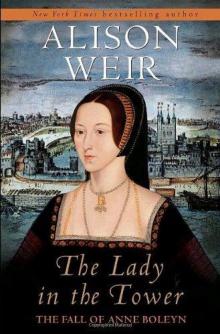 The Lady in the Tower: The Fall of Anne Boleyn
The Lady in the Tower: The Fall of Anne Boleyn Six Wives of Henry VIII
Six Wives of Henry VIII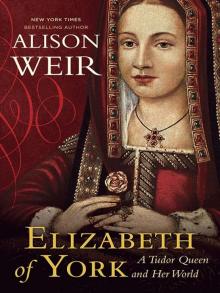 Elizabeth of York: A Tudor Queen and Her World
Elizabeth of York: A Tudor Queen and Her World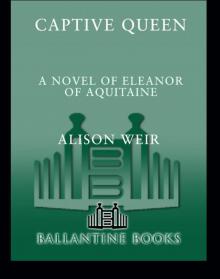 Captive Queen
Captive Queen Innocent Traitor
Innocent Traitor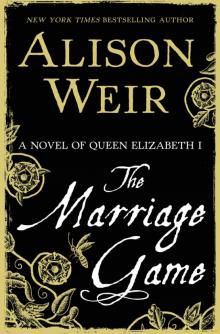 The Marriage Game
The Marriage Game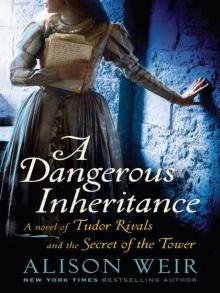 A Dangerous Inheritance
A Dangerous Inheritance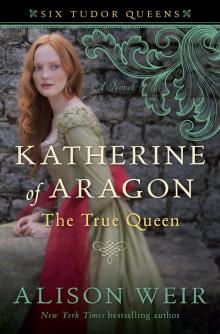 Katherine of Aragón: The True Queen
Katherine of Aragón: The True Queen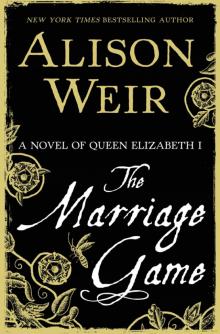 The Marriage Game: A Novel of Queen Elizabeth I
The Marriage Game: A Novel of Queen Elizabeth I Princes in the Tower
Princes in the Tower Anne Boleyn: A King's Obsession
Anne Boleyn: A King's Obsession Traitors of the Tower
Traitors of the Tower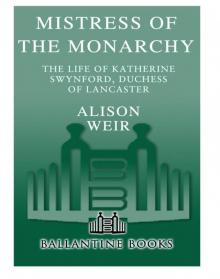 Mistress of the Monarchy: The Life of Katherine Swynford, Duchess of Lancaster
Mistress of the Monarchy: The Life of Katherine Swynford, Duchess of Lancaster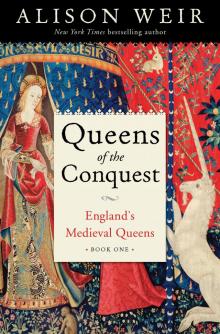 Queens of the Conquest: England’s Medieval Queens
Queens of the Conquest: England’s Medieval Queens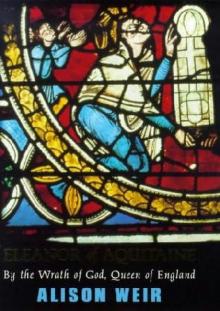 Eleanor of Aquitaine: A Life
Eleanor of Aquitaine: A Life Mary, Queen of Scots, and the Murder of Lord Darnley
Mary, Queen of Scots, and the Murder of Lord Darnley Henry VIII: The King and His Court
Henry VIII: The King and His Court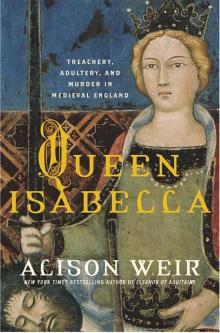 Queen Isabella: Treachery, Adultery, and Murder in Medieval England
Queen Isabella: Treachery, Adultery, and Murder in Medieval England Katheryn Howard, the Scandalous Queen
Katheryn Howard, the Scandalous Queen Arthur- Prince of the Roses
Arthur- Prince of the Roses The Wars of the Roses
The Wars of the Roses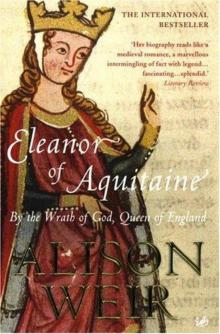 Eleanor of Aquitaine: By the Wrath of God, Queen of England
Eleanor of Aquitaine: By the Wrath of God, Queen of England Mary Boleyn: The Great and Infamous Whore
Mary Boleyn: The Great and Infamous Whore Jane Seymour: The Haunted Queen
Jane Seymour: The Haunted Queen Anna of Kleve, the Princess in the Portrait
Anna of Kleve, the Princess in the Portrait Lancaster and York: The Wars of the Roses
Lancaster and York: The Wars of the Roses The Grandmother's Tale
The Grandmother's Tale The Princess of Scotland (Six Tudor Queens #5.5)
The Princess of Scotland (Six Tudor Queens #5.5) The Lady Elizabeth
The Lady Elizabeth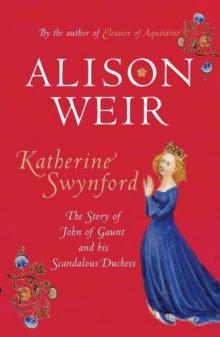 Katherine Swynford: The Story of John of Gaunt and His Scandalous Duchess
Katherine Swynford: The Story of John of Gaunt and His Scandalous Duchess The Curse of the Hungerfords
The Curse of the Hungerfords The Lost Tudor Princess: The Life of Lady Margaret Douglas
The Lost Tudor Princess: The Life of Lady Margaret Douglas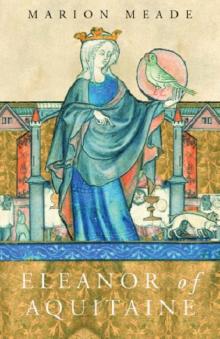 Eleanor of Aquitaine
Eleanor of Aquitaine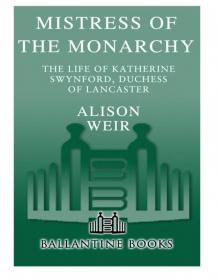 Mistress of the Monarchy
Mistress of the Monarchy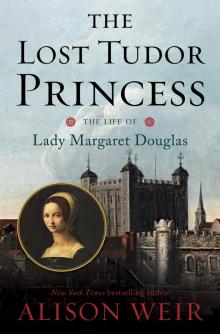 The Lost Tudor Princess
The Lost Tudor Princess Henry VIII
Henry VIII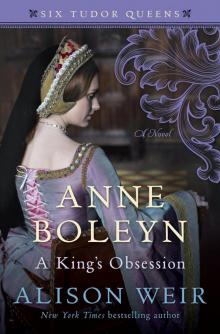 Anne Boleyn, a King's Obsession
Anne Boleyn, a King's Obsession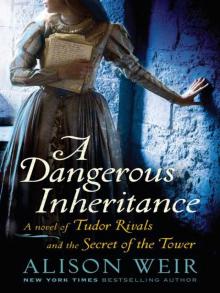 A Dangerous Inheritance: A Novel of Tudor Rivals and the Secret of the Tower
A Dangerous Inheritance: A Novel of Tudor Rivals and the Secret of the Tower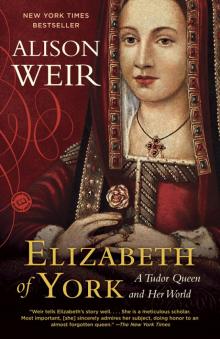 Elizabeth of York
Elizabeth of York Katherine of Aragon, the True Queen
Katherine of Aragon, the True Queen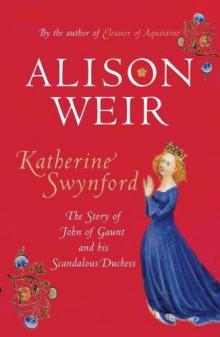 Katherine Swynford
Katherine Swynford Wars of the Roses
Wars of the Roses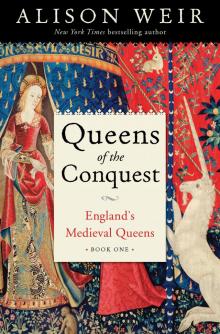 Queens of the Conquest
Queens of the Conquest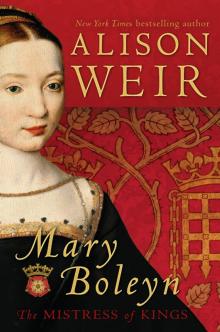 Mary Boleyn
Mary Boleyn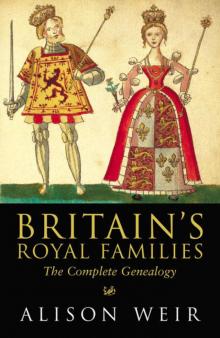 Britain's Royal Families
Britain's Royal Families The Tower Is Full of Ghosts Today
The Tower Is Full of Ghosts Today Life of Elizabeth I
Life of Elizabeth I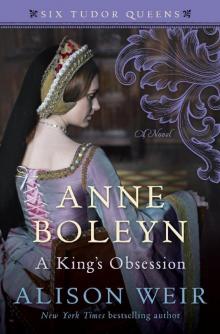 Anne Boleyn A King's Obssession
Anne Boleyn A King's Obssession Lancaster and York
Lancaster and York Jane Seymour, the Haunted Queen
Jane Seymour, the Haunted Queen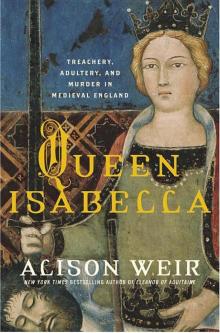 Queen Isabella
Queen Isabella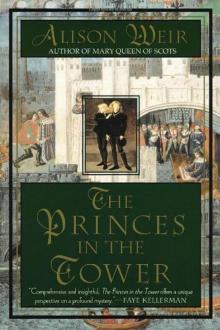 The princes in the tower
The princes in the tower